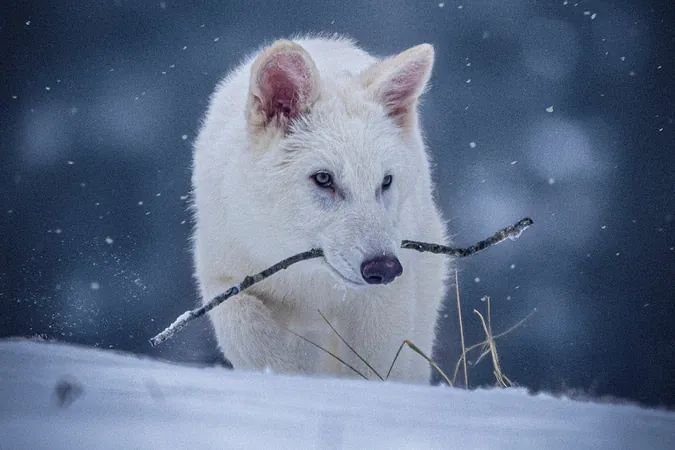
Scientists Resurrect the Dire Wolf from Extinction After 10,000 Years!
2025-04-08
Author: Kai
In a groundbreaking announcement that blurs the line between science and magic, a U.S. biotech start-up has successfully resurrected the dire wolf, a species that vanished over 10,000 years ago. Colossal Biosciences, based in Texas, unveiled this incredible achievement on Monday, boasting the arrival of three modern dire wolf pups: two six-month-old males dubbed Romulus and Remus, and a three-month-old female named Khaleesi—an homage to the popular TV series "Game of Thrones."
How Did They Do It?
The de-extinction process was as innovative as it was complex. Colossal utilized a 13,000-year-old tooth and a 72,000-year-old skull to extract DNA. From here, they took blood cells from a living grey wolf—the dire wolf's closest relative—and made precise genetic modifications at 20 different sites. These modified genes were then introduced into an egg cell from a domestic dog, setting the stage for embryonic development.
Dr. Beth Shapiro, the chief science officer at Colossal, elaborated on the intricate process, emphasizing the necessity of rigorous paleogenomic reconstruction and improved techniques for recovering ancient DNA. This groundbreaking work not only sheds light on the evolutionary history of dire wolves but also lays the genetic groundwork necessary to ensure the species' successful reintroduction.
A Sustainable Future for Dire Wolves
These newly born dire pups will not roam freely but will be kept in a secure ecological preserve monitored continuously. This sanctuary is certified by the American Humane Society and registered with the U.S. Department of Agriculture to ensure their health and safety. As a symbol of their era, dire wolves are characterized by their thick, light fur and impressive muscular jaws, making them larger than today's grey wolves.
While dire wolves largely belonged to the prehistoric landscapes of North America, they enjoy a renewed relevance in modern pop culture—especially due to their portrayal in "Game of Thrones." This cultural connection extends beyond mere entertainment; George R.R. Martin, the author of the series and an investor in Colossal, highlighted the dire wolf’s real historical significance in the American ecosystem, calling this revival a blend of fantasy and reality.
Beyond the Dire Wolf: A Broader Conservation Initiative
But that's not all! Colossal isn't stopping with the dire wolf. The company also announced the successful cloning of four red wolves, utilizing blood drawn from the critically endangered population in the southeastern United States. This initiative strives to increase genetic diversity for the small captive population, aiding efforts to prevent extinction.
The resurrection of the dire wolf not only holds promise for conservation efforts but also opens doors to ethical discussions about the extent of genetic manipulation. As science continues to evolve, the challenge will remain: how to balance innovation with nature’s intricate balance. Could we soon see other extinct species brought back to life? Strap in, because this journey into a brave new world of de-extinction is just beginning!




 Brasil (PT)
Brasil (PT)
 Canada (EN)
Canada (EN)
 Chile (ES)
Chile (ES)
 Česko (CS)
Česko (CS)
 대한민국 (KO)
대한민국 (KO)
 España (ES)
España (ES)
 France (FR)
France (FR)
 Hong Kong (EN)
Hong Kong (EN)
 Italia (IT)
Italia (IT)
 日本 (JA)
日本 (JA)
 Magyarország (HU)
Magyarország (HU)
 Norge (NO)
Norge (NO)
 Polska (PL)
Polska (PL)
 Schweiz (DE)
Schweiz (DE)
 Singapore (EN)
Singapore (EN)
 Sverige (SV)
Sverige (SV)
 Suomi (FI)
Suomi (FI)
 Türkiye (TR)
Türkiye (TR)
 الإمارات العربية المتحدة (AR)
الإمارات العربية المتحدة (AR)